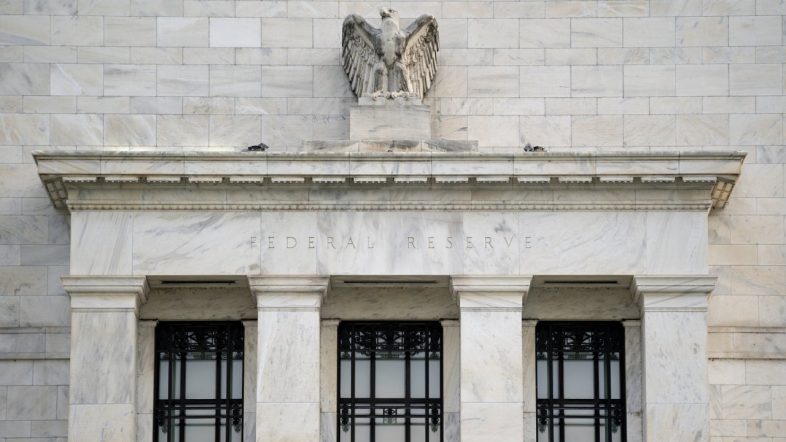The Federal Reserve has raised interest rates dramatically in 2022, and as a result, credit card interest rates are rising.
Credit card interest rates can change whenever the Fed’s base interest rate changes, and most cards have a variable annual interest rate (APR), making them directly linked. When the Fed raises rates, credit card companies usually raise their rates as well.
If you have a large credit card balance, this can be a significant burden as you will have to pay more interest every month.
Read on to learn more about how the Fed’s actions affect you as a credit card user and what you can do to minimize the impact of rate hikes.
Why is the Federal Reserve raising interest rates?
Among the Fed’s many responsibilities is regulating the money supply and setting interest rates to influence other base rates. The federal funds rate, for example, affects the rate on consumer loans such as credit cards and adjustable-rate mortgages.
The federal funds rate is the interest rate at which banks and other depository institutions lend money to each other, usually on an overnight basis.
When the federal funds rate is low, borrowing is cheaper, which can lead to more spending and investment. This, in turn, can lead to higher wages and inflation.
When the federal funds rate is high, borrowing becomes more expensive and this can lead to more savings, which can help keep inflation under control. Inflation has risen sharply in recent years amid several factors, many of which have been driven by the COVID pandemic.
As of December 5, 2023, the federal funds rate is between 3.75 and 4 percent. But that is expected to change later this month during the next meeting of the Federal Open Market Committee, which will set an interest rate target.
How do rate hikes affect credit card interest rates?
The Fed’s target interest rate directly affects credit card interest rates because card issuers’ variable rates are based on the prime rate, which in turn is based on the Fed’s target rate.
The prime rate is the interest rate that banks charge their most creditworthy corporate clients for short-term loans. When the Federal Reserve makes changes to the federal funds rate, it does not directly affect the base rate. Instead, the prime rate is based on the effective federal funds rate, which is one of the rates directly affected by the Fed. The prime rate is used as the benchmark interest rate for many types of loans and loan products, including credit cards.
When the Fed raises the target rate, the prime rate rises, and when the prime rate rises, variable credit card rates soon follow. For the past few years, the Fed has kept the federal funds rate near zero, which is why credit card interest rates have been low. But in 2022, the Fed raised its target rate five times, pushing the average annual interest rate on credit cards to a record high.
The final APR that your credit card issuer offers you will depend on a number of factors, including your credit score, credit history, and income. And most credit cards have a grace period where you can pay no interest on purchases if you pay the balance in full each month by the due date.
However, if you have a credit card balance, interest will accrue on an annualized basis and it will take longer to pay off the debt.
If your card’s APR goes up, you may not see the new rate right away, but you will eventually feel the impact if you keep your balance.
Let’s say your card has an annual interest rate of 19 percent, your balance is $5,000, and you typically pay $150 into your balance each month. Assuming you don’t continue to charge your card extra, it will take you four years to pay off the balance and you will pay $2,165 in interest.
Now suppose your annual percentage rises to 21.25 after a string of three-quarter point increases by the Fed. Your payment schedule will increase to 51 months from 48 months and you will pay $2,626 in interest over that time period.
What can you do to reduce the impact of rate hikes?
If you’re concerned about rising rates on your credit card, you can take the following steps to mitigate the effects:
Pay off your debt
If you have the ability to pay off your credit card balance, you may pay less interest on the remaining balance. For example, if your credit card balance is $5,000, your interest rate is 19%, and you pay $150 per month, you can save $926 and pay off your debt a year early by simply paying off the balance from $5,000 to $4,000.
Tip: Use the CreditCards.com credit card repayment calculator to find out how much interest you will pay over time at your current interest rate and monthly payment.
Refinance or consolidate your debt
If you currently have a high-interest credit card balance, you can refinance your debt with a personal loan or home equity loan to take advantage of a lower interest rate.
Ask for a lower rate
Many cardholders can negotiate a lower rate with their credit card issuer by calling and asking for it. Please note that your chances of success may be higher if you have a good reputation.
Look for cards with the best rates
Promotional interest rates are temporarily lower than normal credit card account interest rates and are commonly used as an incentive to sign up for a card.
For example, a credit card issuer may offer 0 percent APR on balance transfers for a specified period of time—typically six to 21 months. This gives you the ability to pay off your debt faster as your entire monthly payment goes towards your balance rather than interest. Just keep in mind that when the promotional period ends, the card’s normal annual interest rate will be assessed on the remaining balance.
If you are not eligible for the zero interest balance transfer offer, you may still want to buy a card with a lower annual interest rate than your existing card.
Improve your credit score
Your credit history affects the interest rate you pay on credit cards far more than any change in market interest rates. A cardholder with a history of late payments and a poor credit score may pay an interest rate two or three times higher than if they had an excellent credit score.
As you work on your account, you may soon be able to qualify for a loan at lower rates. To improve your score, always pay your bills on time and keep your balance as small as possible. Avoid closing old credit card accounts and don’t apply for accounts you absolutely don’t need.
Consider Nonprofit Credit Counseling
A non-profit organization such as the National Credit Counseling Foundation or American Consumer Credit Counseling can help you develop a debt management plan with your creditors. This can result in lower interest rates and lower monthly payments. A debt management plan won’t hurt your credit score, but you may need to close your credit card account.
bottom line
Credit card interest rates will continue to rise as the Fed tries to bring inflation down, with further rate hikes expected in 2023. such as consolidating your debt, asking for lower rates, or signing up for new cards that can help you pay off your balances faster and without interest.
Editorial disclaimer
The editorial content on this page is based solely on the objective judgment of our contributors and is not based on advertising. It was not provided or ordered by credit card issuers. However, we may receive compensation when you click on links to our partners’ products.


